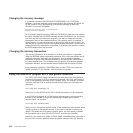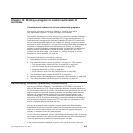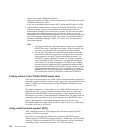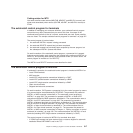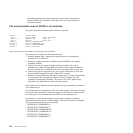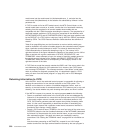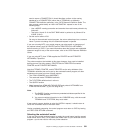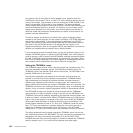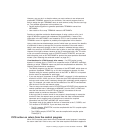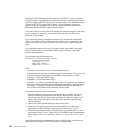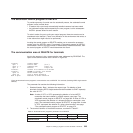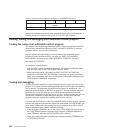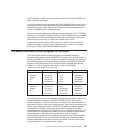model name into the model name list (Autinstmodelname_1), and also into the
model name field (Modelname) in the selection list addressed by fullword 4 of the
parameter list.
If CICS is unable to find an MTS model name in the MTS Control Vector, or the
named model does not exist or is invalid, it builds the list of autoinstall models by
selecting from the complete list of terminal models those models that are
compatible with the VTAM information describing the resource. The complete list of
autoinstall models available to CICS at any time comprises all the definitions with
AUTINSTMODEL(YES) and AUTINSTMODEL(ONLY) that have been installed, both
by the GRPLIST at a CICS initial or cold start, and by INSTALL GROUP commands
issued by CEDA. The CICS Resource Definition Guide describes the definition of
models.
Table 49 on page 834 gives you the information to work out which model types
could be included in the subset of models passed to the autoinstall control program
when a particular terminal attempts to install. The subset is determined by the
VTAM characteristics of the device attempting to log on. The number in the
right-hand column of the figure indicates the selection of the subset from the full list.
When a terminal with a given combination of DEVICE, SESSIONTYPE, and
TERMMODEL values attempts to logon, the subset of matching models passed to
the control program includes all the models with DEVICE, SESSIONTYPE, and
TERMMODEL values that have a corresponding VTAM category number in the
right-hand column of the table.
If CICS finds no model that exactly matches the BIND, and if the return code in the
area addressed by fullword 4 of the parameter list is nonzero, then CICS issues
error message ‘DFHZC6987’. This message contains a “best failure” model name,
which is provided for diagnostic purposes only. It is described in detail in “CICS
action on return from the control program” on page 523, and in CICS Messages
and Codes.
Returning information to CICS
At the INSTALL event, the autoinstall control program is responsible for allowing or
denying the connection of a new terminal resource to the CICS system. This
decision can be based on a number of installation-dependent factors, such as
security, or the total number of connected terminals. CICS takes no part in any such
checking. You decide whether any such checking takes place, and how it is done.
If the INSTALL request is to proceed, the control program must do the following:
v Return an autoinstall model name in the first 8 bytes of the area addressed by
fullword 4 of the parameter list, unless this has already been set by MTS support.
If the control program returns a model name not in the subset passed to it by
CICS, CICS cannot guarantee what will happen when further processing takes
place. It is the user’s responsibility to determine the effect of associating any
particular logon request with a particular model name, because no interface is
provided to the in-storage “model” objects.
v Supply a CICS terminal name (TERMID) in the next four bytes of the return area.
DFHZATDX takes the last four nonblank characters of the NETNAME (addressed
by fullword 2 of the parameter list) as the terminal name, so you must code your
own autoinstall program if this does not match your installation’s naming
conventions. See “Setting the TERMINAL name” on page 522 for information on
this.
Note that when processing an AUTOINSTALL request for an LU6.2 single
session terminal the four byte terminal identifier returned by the user program is
520 Customization Guide



